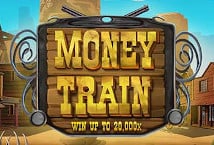Train Slot

In rail transport, a train slot is a license that allows its holder, usually a railway company, to run a train on a specific section of track at a specific time, similar to an airport slot in civil aviation.[1] Rail infrastructure companies such as Network Rail in Great Britain and DB Netze in Germany own the tracks and stations in their area of responsibility and make money by selling train slots to companies which operate freight and passenger services.[2]

The original Money Train is still popular with real cash slots players. With a jackpot of up to 50,000x, Re-spins and Free Spins with big multipliers. It has all the toppings of an epic slot. Had it not been for the Re-spins, play in the base game would be a slog. Furthermore, it’s hard to trigger the Free Spins. Great deals on Lionel Slot Cars. Expand your options of fun home activities with the largest online selection at eBay.com. Fast & Free shipping on many items! Play Money Train 2 Slots Slot Machine Free Slots Free. This free Gold Train slot is a fairly straightforward pokie that runs on 3 payline rails, giving punters a decent chance to line up some prize-winning combinations as the slot chugs along at a medium to high rate of variance.
References[edit]
- ^April Kuo; Elise Miller-Hooks; Kuilin Zhang & Hani Mahmassani (2008). 'Train Slot Cooperation in Multicarrier, International Rail-Based Intermodal Freight Transport'(PDF). Transportation Research Record: Journal of the Transportation Research Board. 2043 (2043): 31–40. doi:10.3141/2043-04. Retrieved 4 May 2014.
- ^Paolo Beria; Emile Quinet; Gines de Rus & Carola Schulze (September 2012). 'A comparison of rail liberalisation levels across four European countries'(PDF). Research in Transportation Economics. 36 (1): 110–120. doi:10.1016/j.retrec.2012.03.014.
In Europe, about a quarter of railway capacity is lost because train paths are not optimally used. As a result, rail transport lacks the flexibility that characterises road transport. Yet, the roadmap of the European Green Deal requires a modal shift towards rail. Luc Vansteenkiste of Railnet Europe therefore emphasises the importance of a centrally controlled and international approach to capacity management on railways.
The Railnet Europe (RnE) representative was a guest in SpoorProTV, our sister’s broadcast, on 24 February. He talked about the Time Table Redesign project, TTR in short, where people are working hard to streamline timetables and capacity management. In 2021, international train traffic still suffers too much from obstacles, such as unforeseen work or capacity requests for lanes that will ultimately not be canceled if they are not used. In other words, the demand from the carriers and the supply from the rail managers must be more synchronised. According to Vansteenkiste, that is the central component of the TTR.
‘Control path allocation from start to finish’
All stakeholders should come together to determine the total available capacity. They then have to coordinate their needs, so that a better distribution of the available capacity can be achieved. Also with regard to the short versus the long term. As far as Vansteenkiste is concerned, the project is therefore a more sensible investment than investments in new infrastructure.

The TTR should ultimately make it possible to meet the needs of travelers, who want to book far ahead and benefit from stability, as well as those of freight transporters, who must be able to switch quickly.
“Now, to operate a freight train from the port of Rotterdam to Poland, you still have to knock on the door of three authorities, namely the Dutch, the German and the Polish. This must be one application, in which the allocation of the trainpath is arranged from start to finish. This also applies to passenger transport. Just like with airline tickets, travelers must be able to book their trip well in advance.”
To operate a freight train from the port of Rotterdam to Poland, you still have to knock on the door of three authorities
In small steps towards the goal
The TTR project rests on three pillars, namely digitisation, regulation and commercial considerations. “An adapted process of capacity management and train path allocation requires new digital solutions, new commercial conditions and a new legal framework”.
Crazy Train Slot Machine

Train Slot Machine Game
Eleven European countries have already committed to implementing the required adjustments. The TTR works under the minimum viable product principle, in which new concepts are tested in real life in small steps, in order to work towards full functionality. “We are not aiming for a rollout in the form of a big bang, but rather an oil slick that spreads across the continent,” says Vansteenkiste.
Lots of small obstacles
Trainspotting
This is a necessity rather than a choice, because according to Vansteenkiste, many obstacles are still encountered in the TTR. “Despite the many efforts, we notice that there are still minor national differences in procedures, regulations and approach. We have to be able to deal with that. And in projects involving international coordination, planning and monitoring finances always remain points of attention”, says Vansteenkiste.
Nevertheless, he expects the TTR to be completed by the target date of 2025, at least in the eleven countries leading the way. Elsewhere, it will have to become clear how things are going at the end of this year. In any case, it will not be due to the willingness of the parties involved, says Vansteenkiste. “Everyone works hard and there is almost permanent consultation. There is enthusiasm and the will to give rail traffic a place.”
Also read: